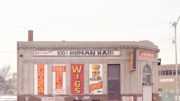Folks, we’re in one of those periods where there’s no new Star Trek to watch. We’ve been spoiled for quite a while in this regard, with so many shows going on at the same time. But, with Picard having taken its final bow, I find myself once again with no reason to keep Paramount+, and wanting a fix of something new from the 24th century to watch
YouTube is happy to comply
YouTubers “TrekYards” are more than happy to help you get your fix. They came up with this video showing a comparison between the original sets of the NCC-1701-D with the recreation used in the last episodes of Picard.
How they did it
Of course it’s no surprise that Paramount would have the original production blueprints and there is obviously going to be a lot of reference photography available. Although Star Trek: The Next Generation was originally distributed in standard definition, it was shot on film so the quality of stills you can get from it rivals 35mm cameras from the day.
The folks at Trekyards do mention a few things that make the visuals a little different in Picard from the original. Yes, the original was shot on 35mm film and then scanned with a high-definition film scanner. When this is done, there are always decisions made about color because you’re scanning negatives and the color can be interpreted different ways. So, if you felt like the Picard set was a little too grey, it’s probably just the way it was shot. I’m betting that the materials are all the right color.
They also mention that some of the shots don’t seem to quite line up. There are, for example, screens visible behind the captain’s chair that weren’t visible in the original show. Again, I’d chalk this up to the cameras used. Back then, 35mm cameras were huge and so a camera would have to be much further from the subject. Most likely the big gap between the two front stations was there so that the camera could move back far enough. Today, you can get a studio quality 6K camera that’s small enough to hold. So, the way the backgrounds look compared to the foreground is going to be different.
I’ll give them credit (and simultaneously take off points…)
First of all I’ll give the team credit for building the full set at all. With so much reference photography it would have been very easy to build just the chairs and have everything else put in digitally. Using an immersive live background like what The Mandalorian uses would have made it incredibly easy. But the results wouldn’t have looked as good. It would have looked like a cheat.
I’ll also give them credit for the screen displays. (Not surprisingly, since legendary designers Mike and Denise Okuda came back to do them.) It’s not just that they have the right design, but the Okudas have even duplicated the uneven lighting of the old screens. Back in the 1980s it wasn’t possible to have 60″ diagonal flat screens installed. So, all the displays were actually lithographic film with colored gels, lit with incandescent bulbs. This gave the displays a very uneven lighting effect. I give them credit for simulating this with the new displays, which are clearly just flat TVs mounted in there.
But, the lighting
That said, I’ll take away some credit for the lighting. Picard has been criticized, as has much of today’s quality TV, for being too dark. The sets are self-lighting instead of using large studio lights. This gives the producers a lot of flexibility on where and what to film. However, it does usually mean that the people look very dark.
In contrast, Next Generation had a lot of studio light, necessary for those old cameras, and looks as bright as day. Certainly the recreated scenes are lighter than the rest of the show. I mean they had to be. But I think that they should have gone farther, using studio lights to create perfectly even, high-contrast lighting. Maybe they thought that by lighting the Enterprise-D set properly, it would make people complain too much about the other sets. Too late, say I. I’m already complaining.
June 15
It looks like there won’t be any new Trek until June 15, so until then I’ll just have to rely on videos like this one to keep me going.





